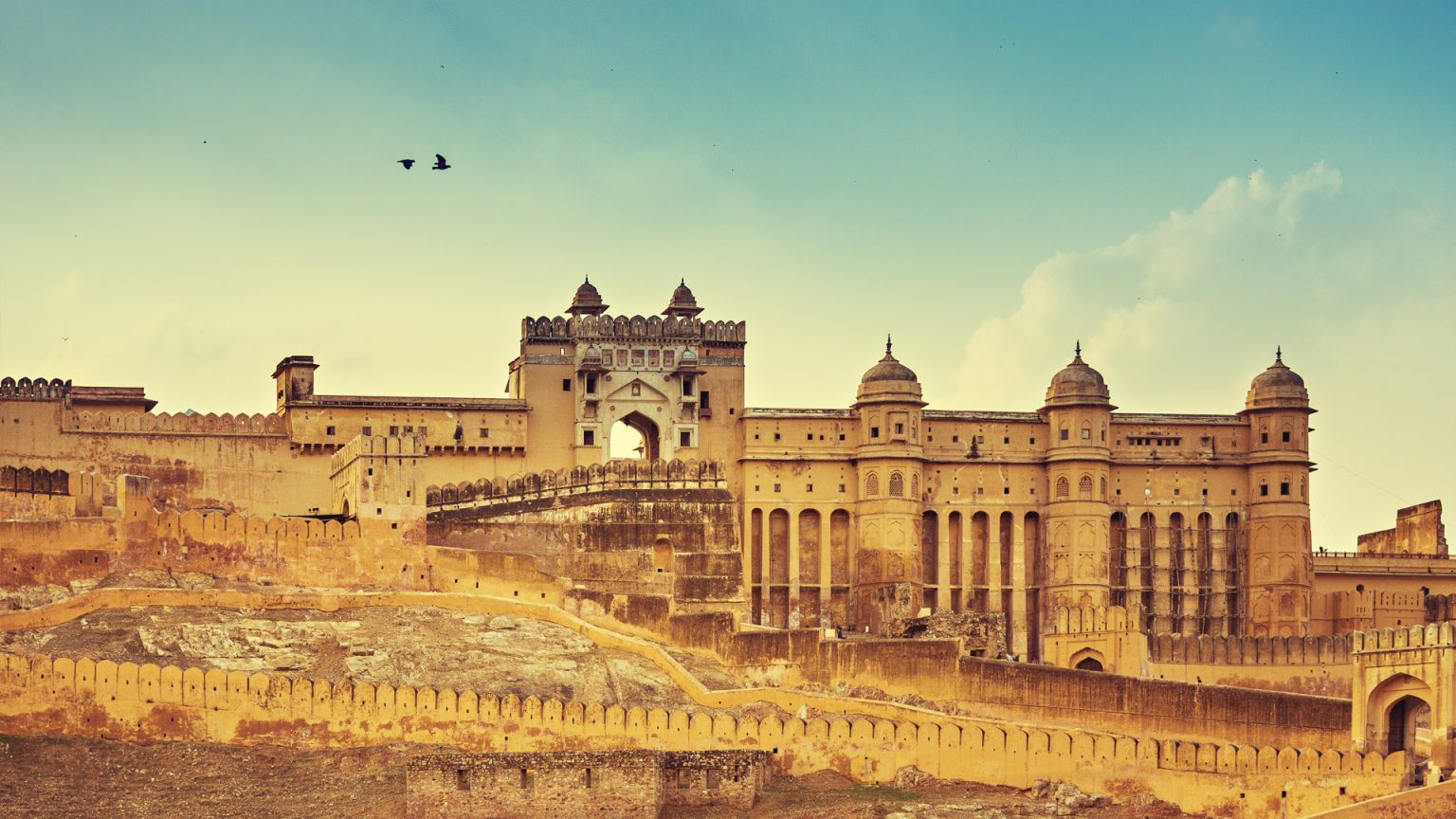
Jaipur, also fondly known as the ‘Pink City,’ proudly stands as the capital and largest city of the Indian state of Rajasthan. Maharaja Sawai Jai Singh II laid its foundation in 1727 A.D., and Jaipur has since blossomed into one of India’s most meticulously planned urban centers, nestled within the semi-desert landscapes of Rajasthan.
Once the regal heart of royalty, Jaipur has gracefully transformed into the thriving capital city of Rajasthan. The very essence of Jaipur mirrors the preferences of the Rajputs and the royal lineage. In contemporary times, Jaipur has evolved into a bustling hub of commerce, embodying all the quintessential attributes of a metropolis.
MUST-SEE SIGHTS IN JAIPUR
Hawa Mahal Jaipur
Hawa Mahal – Arguably Jaipur’s most iconic landmark, this ‘Palace of Winds,’ constructed in 1799 under the patronage of Sawai Pratap Singh, was originally designed to offer a glimpse into the daily life of the city’s royals. The palace boasts multiple tiers of gracefully arched windows, adorned with delicate “jali” – intricate latticework screens.
Jantar Mantar Jaipur
The Jantar Mantar monument in Jaipur, Rajasthan, is an ensemble of nineteen architectural marvels devoted to astronomical pursuits. Commissioned by the Rajput monarch Sawai Jai Singh and completed in 1738 CE, it proudly boasts the world’s most colossal stone sundial and holds the distinction of being a UNESCO World Heritage site. The Jantar Mantar stands as the preeminent stone observatory on a global scale, rendering it an extraordinary destination for travelers.
Amber Fort Jaipur
Amber Fort – Nestled amidst the rugged hills just beyond the city limits, Amer Fort is a remarkable testament to the synthesis of Hindu and Muslim architectural styles. Crafted from red sandstone and adorned with white marble, this fort’s crowning jewel is the Sheesh Mahal, renowned for its exquisite mirror craftsmanship.
Jaipur Jal Mahal
Jal Mahal, a water palace, gracefully rises from the tranquil waters of Man Sagar Lake in Jaipur City. This architectural marvel is a quintessential embodiment of Rajput culture, having undergone extensive renovations and expansion during the 18th century under the stewardship of Maharaja Jai Singh II of Amber. The splendid five-story structure, constructed in striking red sandstone, exudes timeless elegance.
City Palace
Jaipur’s City Palace is an iconic architectural marvel and a prominent landmark within the city. Conceived and constructed during the reign of Maharaja Sawai Jai Singh, this splendid complex encompasses vast gardens, courtyards, and regal edifices. Initially, Raja Jai Singh erected the outer walls, encasing a sprawling expanse, with subsequent monarchs adding opulent structures to augment its grandeur.
Albert Hall
Albert Hall (Central Museum) is nestled within the lush confines of Ram Niwas Garden. This expansive garden houses a zoo, a botanical garden, an aviary, a museum, and even a sports ground. Maharaja Sawai Ram Singh II initiated its creation in 1868 as a relief project for his subjects enduring the ravages of famine. Unfortunately, the zoo evokes a somber atmosphere, as malnourished birds and animals struggle to thrive in their artificial habitats, devoid of the care and compassion they deserve.
Birla Mandir
This modern marvel, the Birla Mandir, graces Jaipur with its pristine white marble facade and three majestic domes. Within its sanctum, the enchanting deities Lakshmi and Narayana bless devotees with their divine presence. The temple, illuminated beautifully at night, presents a captivating spectacle. Visitors are kindly requested to dress appropriately and leave their footwear at the side entrance before entering this sacred abode, where a solitary figure of Lord Shiva awaits amidst the lush garden surroundings.
# Jaipur in the 18th Century: The Pink City’s Royal Splendor
**Introductory Paragraph:**
Welcome to Jaipur in the 18th century, a city that exudes royal opulence and architectural marvels. It’s the year 1734, and the Pink City, as it’s known today, is just beginning to take shape under the reign of Maharaja Sawai Jai Singh II. Prepare to be mesmerized by the grandeur of palaces, the intricacy of craftsmanship, and the vibrant culture that thrives within these walls.
**Most Interesting People Alive:**
1. **Maharaja Sawai Jai Singh II:** The visionary ruler and founder of Jaipur, Jai Singh II, is a polymath known for his contributions to astronomy, mathematics, and architecture.
2. **Sawai Ram Singh II:** The 19-year-old ruler is about to ascend the throne, and his reign will see further development and modernization of Jaipur.
3. **Maharani Swaroop Kaur:** The queen is known for her patronage of the arts and her significant role in the city’s cultural development.
4. **Sawai Bhawani Singh:** A young prince with a promising future, he will play a vital role in preserving Jaipur’s heritage in the years to come.
**Most Interesting Sights to See:**
1. **Hawa Mahal:** Marvel at the Palace of Winds, a unique five-story structure with 953 small windows designed to allow royal ladies to observe street festivals without being seen.
2. **City Palace:** Explore the opulent royal residence, City Palace, which boasts a museum showcasing artifacts from Jaipur’s history.
3. **Jantar Mantar:** Visit the astronomical observatory built by Maharaja Jai Singh II, featuring fascinating instruments for celestial observation.
4. **Amber Fort:** Venture to the nearby Amber Fort, a majestic hilltop fortress known for its intricate mirror work and stunning architecture.
**Everyday Life:**
Jaipur in the 18th century is a hub of activity, with the bustling bazaars filled with artisans, traders, and craftsmen. The city’s inhabitants are known for their vibrant clothing, intricate jewelry, and rich cultural traditions.
**Best Foods to Eat:**
Indulge in Rajasthani cuisine with dishes like dal baati churma, gatte ki sabzi, and laal maas. Don’t forget to savor traditional sweets like ghewar and mawa kachori.
**Dangers to Be Concerned About:**
While Jaipur is a city of splendor, travelers should be wary of political intrigues and power struggles within the royal court. Additionally, keep an eye out for the vibrant but chaotic streets, as they can get crowded and potentially disorienting.
DESTINATION and TIME: Feel free to provide another historical place and time-period for me to explore.